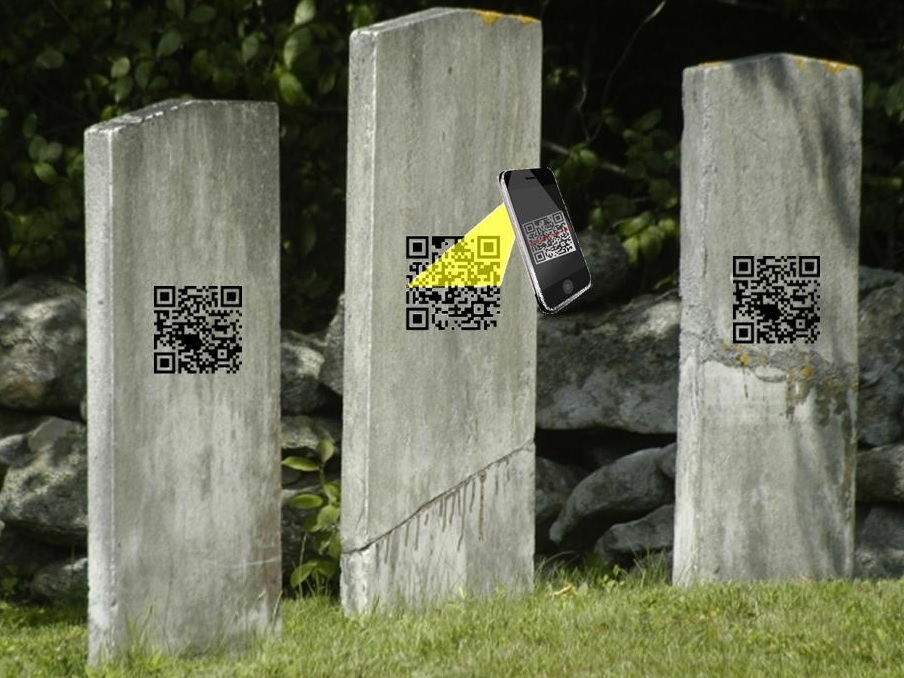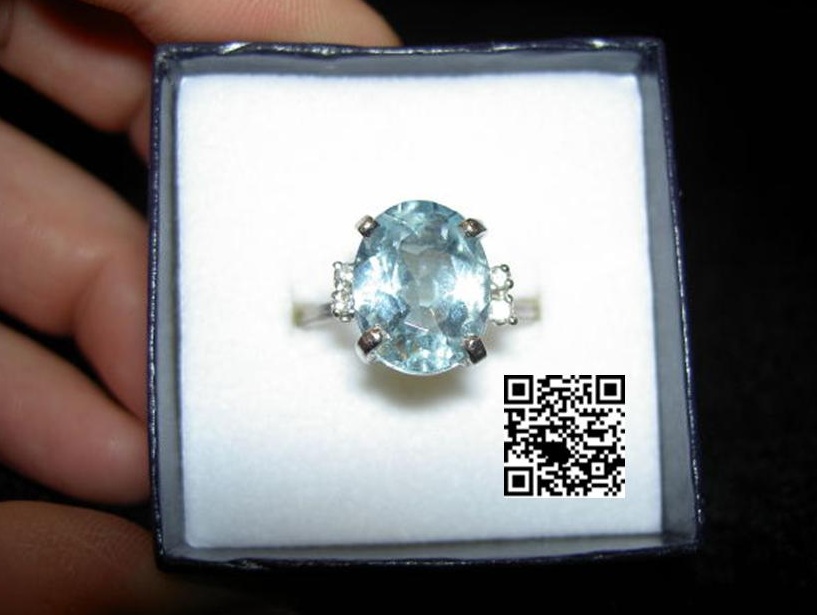These barcodes are being increasingly used on grave markers to help say more about the individual buried beneath.
Although QR codes are found most often in mobile marketing and on product packaging to allow consumers to gain a larger amount of information about what is being sold, cemeteries have picked up on the concept and are attaching them to tombstones to turn a very limited space into a virtually limitless opportunity for sharing more about the deceased.
These smartphone friendly barcodes can be scanned through the use of any free reader app.
In the latest issue of the Online Genealogy Newsletter, Dick Eastman published a piece entitled “Genealogists have recently been finding QR Codes on tombstones.” Within it, he explained what the barcodes are and how smartphone users would be able to scan them and be redirected to a specific webpage through the browser of the device.
 In the case of tombstones, QR codes can redirect visitors to a cemetery to a page about the deceased.
In the case of tombstones, QR codes can redirect visitors to a cemetery to a page about the deceased.
This feature is becoming quite popular in the cemeteries and memorials industry. Through the use of QR codes, families and friends can build a webpage that provides a great deal more information about their loved one than one or two words as well as a couple of dates and a name. In fact, it opens the opportunity to share pictures, stories, videos, and even audio recordings. It could contain a detailed biography of the person and can provide visitors to the cemetery with the chance to leave their condolences for the family.
Some QR codes also allow cemetery visitors to share their own memories with a feature that allows for photo uploads, text entry, and other types of content creation and sharing. Typically, though, these barcodes lead to a site that is entirely managed by the family of the person who has died, giving them complete control over what is posted there.
Though there were a few cemeteries that led the way with QR codes in the United States, such as a small handful in Washington state and Pennsylvania, this has rapidly expanded to the point that they are becoming quite common in many states. Moreover, they are also available in the United Kingdom and across much of Europe, as well as in China. Recently a war memorial cemetery in Wales introduced the barcodes – a launch that was celebrated with a member of the royal family in attendance.

 ellence, as a step in the certification process. Each article will be affixed with its relevant barcode. Just as has previously been the case, it will still be possible to obtain hard copy reports on any jewelry that has been certified by the organization. These barcodes will simply provide an immediate link to the information that can be accessed wherever the device user may be.
ellence, as a step in the certification process. Each article will be affixed with its relevant barcode. Just as has previously been the case, it will still be possible to obtain hard copy reports on any jewelry that has been certified by the organization. These barcodes will simply provide an immediate link to the information that can be accessed wherever the device user may be.